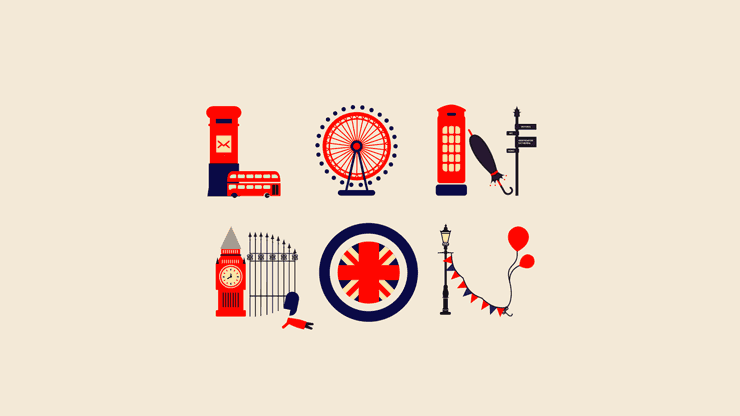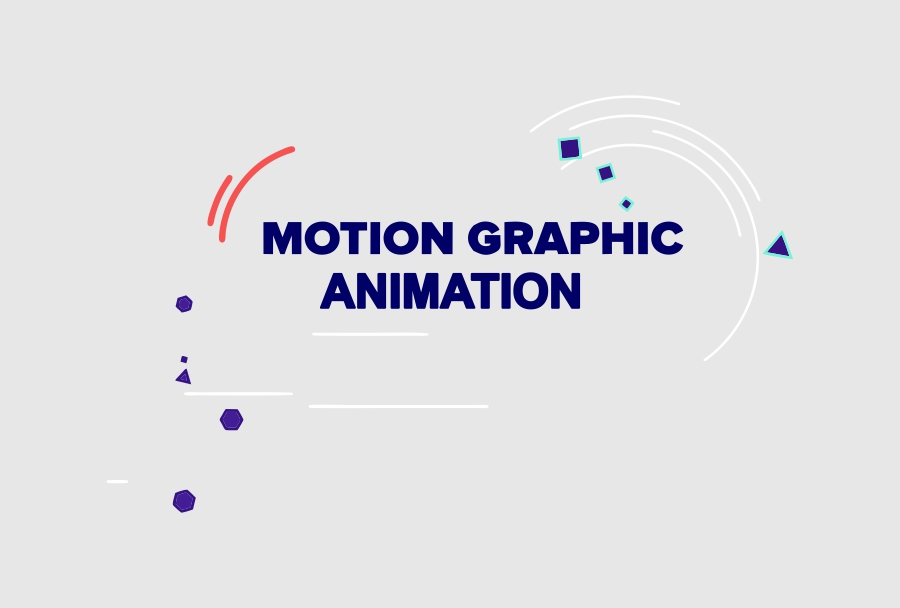If you want to get into producing animated videos for your business, you’ve probably asked yourself: What is the difference between animation and motion graphics?
Motion graphics are a type of animation. While motion graphics describes moving or animated graphic design, animation is an umbrella term for the whole field of moving imagery, including everything from cartoons to claymation. Motion graphics focus on giving movement to graphic design elements, but tend to have less of a concrete storytelling aspect than other types of animation.
The terms are often used interchangeably and the distinction is not always completely black and white.
In this article, we’ll define motion graphics and explain how it differs from other styles of animation. We’ll also explain when to use which term when talking about motion graphics and animation.
What are motion graphics?
Motion graphics takes graphic design that would be otherwise static and gives it animation and movement, usually without following a specific narrative.
Want the bars in your graph to rise up for some extra visual flair? That’s motion graphics.
Want the logo on your website to spin around? That’s motion graphics.
Want to animate characters to bring a children’s fairy tale to life? That’s actually not motion graphics. It’s a completely different type of animation.
Whether or not there’s a “story” being told is a big determining factor in deciding if you’re dealing with motion graphics or animation. Motion graphics animation usually features shapes, objects or text that are being set in motion.
Why bother with motion graphics instead of a much cheaper, static infographic?

Motion graphics set shapes and letters in motion. Design via Abigail Kim
Motion graphics can illustrate complex ideas visually
Think of motion graphics like a visual aid. Some ideas (especially big, abstract ones) are hard to explain with words or still images. A few seconds of motion graphics can clear everything up perfectly. Just think about how password fields sometimes vibrate or turn red when you enter a wrong password, instantly signalling that you need to try again.
The visual style of motion graphics appeals to a wide range of viewers
Cartoons may come across as too childish for a formal business. But motion graphics can use that cute and fun style and apply it to more mature topics. No matter what industry you’re in, the motion graphics look can make your message more engaging and entertaining.
What is animation?
Animation is the broader umbrella term that motion graphics falls under. Animation has a history dating back more than 100 years. (Wanna dig into that history? Check out this great guide to animation).
Any technique that makes static objects or images move is animation—whether it’s hand-drawn cartoons, CGI, anime, claymation or motion graphics. These categories are not mutually exclusive. Most motion graphics are done with CGI, but you could theoretically do hand-drawn motion graphics as well.
What separates motion graphics from other types of animation (at least in terms of marketing videos) is content. Motion graphics are typically associated with setting abstract objects, text and other graphic design elements in motion. Bringing a graph, infographic or web design to life using movement is broadly speaking “animation,” but more specifically, it’s a type of animation that’s called motion graphics.
In contrast, animation as a specific art form focuses more on cinematic effects and storytelling techniques to craft a narrative.
Think of it like this: if your video sets graphics in motion to illustrate a point, it’s would be called motion graphics. If your video features a human character that goes on an emotional journey, it’s more likely to be called “animation.”
So when do you use the term animation compared to motion graphics?
Animation is used for stories.
Anyone who’s seen a Pixar film knows that animation can be a powerful storytelling medium. Motion graphics can bring statistical data to life, but animation can bring characters to life with emotional narratives, creativity, and artistic expression.
Animation is more expensive.
Motion graphics are usually easier to produce. It’s a less complex form of animation. But when you start looking at photorealistic CGI, hand-drawn or painted artwork, and stop-motion techniques, expect to invest more money.
Motion graphics vs. animation: When to use each technique
It’s no secret the internet loves videos. No matter whether you choose motion graphics or other styles of animation, videos in general yield better engagement, traffic and conversions.
Video is the #1 preferred type of content from brands with 93% of digital marketers saying that social media videos won them new customers. More than half of users engaged with a brand after watching one of their videos on social media.
However, you don’t want just any video, you want the one that best matches your brand and business goals. So, do you use motion graphics or animation?
When to use motion graphics
Motion graphics are best for outlining or emphasizing facts and illustrating a point you’re trying to make. Motion graphics are used when there’s no need for narrative or storytelling.
Motion graphic videos can break down your complex services or products and present them in a memorable way. Remember, motion graphics are at their core visual aids, so they excel at teaching hard-to-understand ideas through visuals.
When to use other animation techniques
If you want to highlight the emotional aspects of a story, provide a narrative or if you need to connect with your audience on an emotional level, you want to go with other kinds of animation.
Stories help establish a deeper connection between you and your target audience and other types of animation are better suited for creating these kinds of narratives.
Marketing in motion
When we’re talking about motion graphics and other types of animation, remember: there is a lot of overlap between these and sometimes it can be hard to tell them apart.
But no matter which type of animated video you use, you’re on your way to more engaging content for your audience.
And we’re here to help you get it right: learn more about video, from the basics of video production and video marketing and what types of video there are, to scaling your video production and creating video for social media.
Source : Motion graphics vs. animation: what’s the difference? by Matt Ellis









